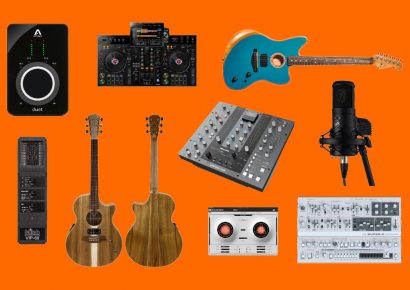While Christmas time is prime Buble, there's no doubting how amazing he truly is
No matter your thoughts on him, there’s no doubt Michael Buble is one of the world’s most unique performers, his interesting vocal timbre and old school music stylings harkens back to a day of old school crooners like Bing Crosby, Frank Sinatra, and Dean Martin.
But what’s been the key to his success and decades of musically strong releases? It’s clear that there’s a special sauce – a producer you can befriend, and this is the case with Buble, who has worked with talented producers David Foster and Humberto Gatica throughout all his commercial releases to date. Today we’re detailing the work behind Buble’s music.
Read up on all the latest interviews, features and columns here.
David Foster and Michael Buble’s story goes back a number of years where Foster attended a wedding Buble was the wedding singer for.
Buble then wanted to be signed to Foster’s 143 Records, which is a sub-label of Warner. Buble was lambasted for his unmarketable brand of music, and was made to raise half a million dollars for the album to be produced on spec. The money was raised, the record was made, and the rest is history.
The relationship between Foster and Buble is so strong that for Buble’s most recent album Love, the singer coaxed the producer out of retiring.
Foster has a rich history in the music industry and especially in the Christmas album world, producing hit carol albums from mammoth artists such as Andrea Bocelli, Celine Dion, and Josh Groban, to name a few. He of course was also front and centre for Buble’s Christmas album.
On top of this, Foster and Gatica have separate credits on releases from Madonna, Mariah Carey, and the theme from St Elmo’s Fire. Their experience making them the perfect choice for Buble’s work.
Since his first release back in 2003, Buble has never wavered from his big band stylings, with his later albums Crazy Love and To Be Loved having a modern spin, but still staying true to the music he loves.
Back in the time of Crazy Love production, Gatica used very limited digital processes, rather opting to undertake a fair amount of work in the analogue world, bringing forth the old school vibes that drip through a Buble record.
But Gatica has referenced in interviews that he does use Pro Tools, truly mixing the old with the new, which could be a definition for Buble’s music.
There’s no doubt you’ve heard a Buble song before, and the first thing your ear goes to is the voice. Buble has one of the most iconic and distinct voices in the world thanks to the production and engineering efforts of Foster and Gatica.
Through Gatica recording such iconic voices as Celine Dion, Josh Groban, and Mariah Carey, it makes sense that a great deal of attention is put on the vocals.
Gatica records Buble’s vocals on a vintage Neumann U47 Tube mic, which is often lauded for its extremely high-quality recording capability which is why Buble’s voice is looked upon so favourably.
This particular mic is typically used for recording drums and instruments with a lower tuning, but Gatica opts to use it for vocals to pick up lower sounds in Buble’s vocals.
The Neumann love follows through to the instruments recording the drums and upright bass with the German mic.
Unlike many of the recording processes in music nowadays, Buble’s music is recorded in full. Choruses aren’t clipped and solos aren’t isolated, Gatica ensures everything is brought forward together.
Musicians were often separated into rooms, headphoned with an isolated vocal line, which according to Gatica at an interview at the time, “inspired them to better execution, and to get a good take”.
Due to the live recording and use of no click track, there would be often multiple takes to ensure everything sounded perfect, but due to the high pedigree of musicians, a few takes is often all they would need.
For the next stage of the recording process, Gatica got it down and completed a great deal of the post production on a Neve 8068, which is another important element of understanding the music of Buble, and his grand big band sound.
The Neve 8068 mixer has been used by icons in jazz and blues like Herbie Hancock, and icons of the rock world like AC/DC.
Two areas of music that are vastly different from each other, but have strong instrumentation, and are really focused on the sound of the instrument.
So now you know why he’s your mum’s favourite!
If you’re keen to dive into more production stories, check out our one on ABBA here.







